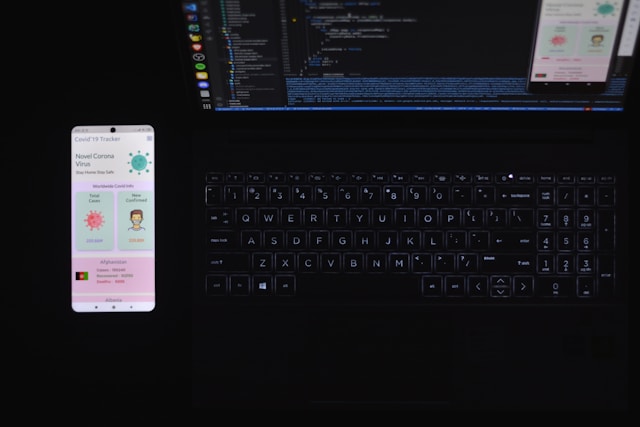Hello tech enthusiasts! Evelyn Reed here, your guide in the ever-evolving world of mobile apps. Today, let’s dive into a crucial decision for any aspiring app creator: choosing the right mobile app development platform. It’s a bit like picking the right set of tools for a big construction project – get it wrong, and you’re in for a world of pain! So, grab your coffee (or tea, if you’re like me!), and let’s get started.
Understanding Your Needs
First things first, what are you trying to build? Is it a simple utility app, a complex social platform, or something in between? Understanding your app’s requirements is the absolute key. I mean, you wouldn’t use a hammer to screw in a screw, right? (Well, you *could*, but I wouldn’t recommend it!). Consider these points:
- Target Audience: Who are you trying to reach? iOS users tend to be a bit more affluent (generally!), while Android has a broader reach.
- Features: Does your app need access to specific hardware features like GPS, camera, or Bluetooth?
- Performance: How critical is performance? Games and graphically intensive apps need that extra oomph.
- Budget: Ah, yes, the dreaded budget. How much are you willing to spend? (It’s always more than you think, trust me!)
Popular Platforms: A Quick Comparison
Okay, let’s look at some of the big players in the app development game. Each has its strengths and weaknesses, so pay close attention. I’ll try to keep it simple, I promise!
Native Development (iOS and Android)
Going native means building separate apps for iOS (using Swift or Objective-C) and Android (using Java or Kotlin). It’s like building a house from scratch with the best materials – you get top-notch performance and access to all the platform’s features. It is so good.
Pros:
- Best Performance: Native apps are usually the fastest and most responsive.
- Full Access to Features: You can use every single bell and whistle the platform offers.
- Excellent User Experience: Native apps just “feel” right on their respective platforms.
Cons:
- Higher Cost: Developing two separate apps is, well, twice the work!
- Longer Development Time: It takes longer to build and maintain two codebases.
- Requires Platform-Specific Skills: You need to find developers with expertise in both iOS and Android.
Cross-Platform Development (React Native, Flutter, Xamarin)
Cross-platform frameworks let you write code once and deploy it on both iOS and Android. Think of it as building with prefabricated components – it’s faster and cheaper, but you might have to make some compromises. These tools are something.
React Native
Developed by Facebook, React Native is a popular choice for building apps with a native look and feel. It uses JavaScript, which is a widely known language (always a plus!).
Flutter
Google’s Flutter is another strong contender, known for its fast performance and beautiful UI. It uses the Dart language, which might have a steeper learning curve for some.
Xamarin
Xamarin, now part of Microsoft, allows you to build cross-platform apps using C#. It’s a good option if you’re already familiar with the Microsoft ecosystem.
Pros:
- Lower Cost: Code reuse can significantly reduce development costs.
- Faster Time-to-Market: You can launch your app on both platforms more quickly.
- Wider Audience Reach: Reach both iOS and Android users with a single app.
Cons:
- Performance Limitations: Cross-platform apps might not be as fast as native apps.
- Limited Access to Features: You might not be able to access all platform-specific features.
- Potential for Inconsistent User Experience: It can be tricky to create a truly native look and feel on both platforms.
Other Considerations
Beyond the core platform, there are other things to keep in mind. Social media integration is something that cost about 1000$, but not now! Consider these:
- Backend Development: Will you need a robust backend to handle data and user authentication?
- API Integrations: Does your app need to connect to third-party services?
- Testing: Thorough testing is crucial to ensure your app works flawlessly on all devices.
- Maintenance: Apps aren’t “set it and forget it.” You’ll need to update them regularly to fix bugs and add new features.
Making the Right Choice
So, how do you choose? Well, there’s no one-size-fits-all answer. It depends on your specific needs, budget, and technical expertise. If you need the best possible performance and access to all platform features, and cost isn’t a major concern, native development is the way to go. If you’re on a tight budget and need to launch quickly, cross-platform development might be a better option.
Pro-Tip: Don’t be afraid to experiment! Try out different frameworks and see what works best for you. There are tons of tutorials and resources available online. And, of course, don’t hesitate to reach out to me if you have any questions!
That’s all for today, folks! I hope this guide has helped you navigate the confusing world of mobile app development platforms. Remember, the right choice can make all the difference between a successful app and a complete flop. Happy coding!
Best,
Evelyn Reed
